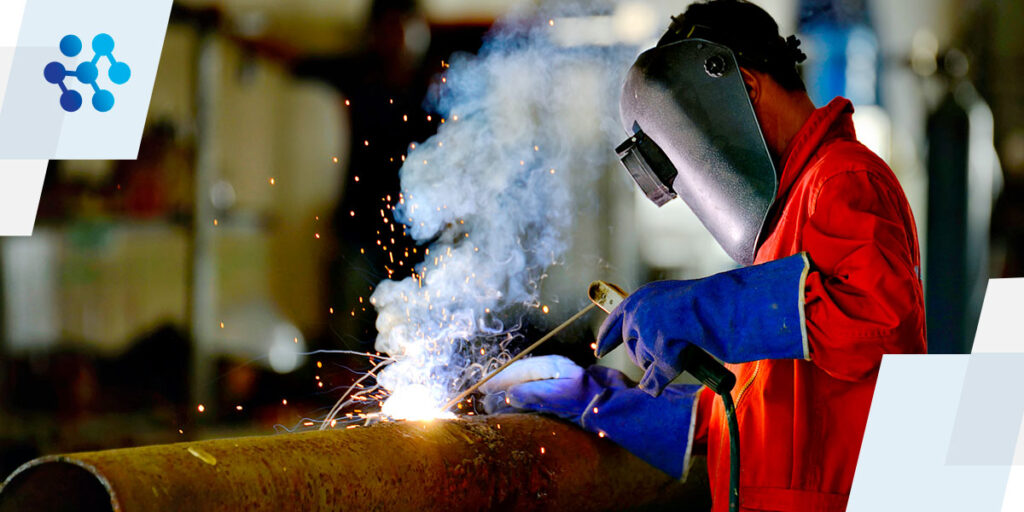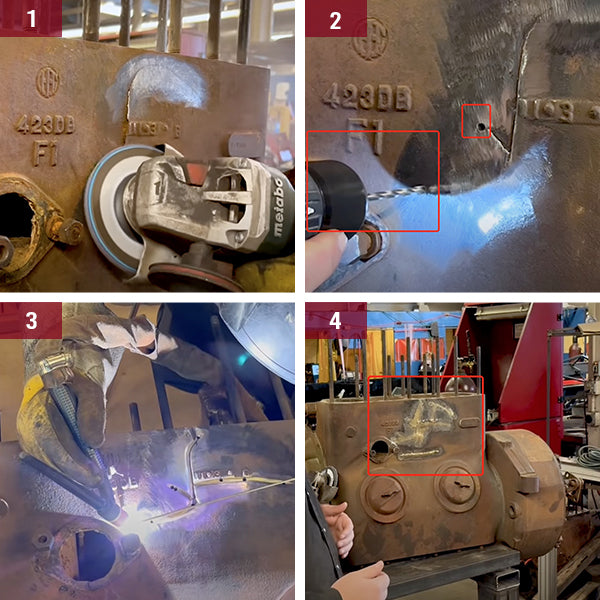All Concerning Welding: Trick Insights Into Techniques and Best Practices for Success
Welding includes a variety of strategies, each matched for details materials and applications. Understanding these methods, such as GMAW, SMAW, and TIG, is important for accomplishing optimal outcomes. The right devices and safety techniques can not be neglected. As preparation and troubleshooting play important roles in the welding procedure, understanding these aspects can considerably improve the quality of the end product. What are the key factors that ensure a successful weld?
Comprehending Various Welding Strategies
Welding strategies include a range of techniques, each matched to details applications and products. Amongst one of the most common techniques are Gas Steel Arc Welding (GMAW), Protected Steel Arc Welding (SMAW), and Tungsten Inert Gas Welding (TIG) GMAW, likewise called MIG welding, is preferred for its rate and convenience, making it perfect for slim materials. SMAW, or stick welding, is preferred for its simpleness and efficiency in exterior settings, particularly with thicker steels. TIG welding offers precision and control, making it appropriate for elaborate job and non-ferrous steels (Montana Mobile Welding and Repair Welding). Each strategy has its distinct benefits and factors to consider, allowing welders to choose the most effective technique based upon the job's needs, product type, and wanted results. Recognizing these strategies is essential for successful welding
Crucial Welding Equipment and Tools
While different welding strategies need certain abilities, the best tools and tools are similarly crucial for attaining high quality results. Necessary welding devices includes welding equipments, which differ depending on the method-- such as MIG, TIG, or stick welding. Protective gear, consisting of aprons, safety helmets, and handwear covers, warranties safety and comfort throughout the procedure. Furthermore, components and clamps aid secure products in position, making certain precision in welds. Consumables like welding rods, wire, and shielding gas are additionally critical elements that affect the top quality of the weld. Furthermore, tools such as grinders and cutters assist in surface area prep work and post-weld completing, adding to a professional end result. Spending in high-grade devices eventually improves the effectiveness and performance of welding tasks.
Security Practices in Welding
Appropriate security techniques are essential in the welding market to secure employees from prospective threats. Welders need to wear suitable personal safety devices (PPE), including headgears with appropriate shading, handwear covers, and flame-resistant apparel. Adequate air flow is vital to minimize direct exposure to hazardous fumes and gases created throughout the welding procedure. In addition, employees should be educated in the proper handling of welding tools to stop crashes. Fire precaution, such as keeping combustible materials away from the welding area and having fire extinguishers readily offered, are necessary. Routine inspections of equipment and work areas can aid recognize prospective threats prior to they lead to crashes. By adhering to these safety methods, welders can produce a much safer working setting and lessen threats connected with their profession.
Preparing Materials for Welding
Preparing materials for welding is a crucial action that significantly influences the top quality and integrity of the final product (Montana Mobile Welding and Repair Belgrade). Correct preparation involves cleansing the surfaces to remove contaminants such as dirt, corrosion, and oil, which can compromise the weld. Methods such as grinding, fining sand, or making use of solvents are generally utilized to accomplish a clean surface. Furthermore, making sure that the materials fit together well is vital; spaces can result in weak welds. It's likewise important to take into account the placement and positioning of the elements, as this will affect the ease of welding and the last result. Choosing the appropriate filler material and making certain compatibility with the base metals is essential for accomplishing solid, resilient welds.
Tips for Getting High-Quality Welds
Achieving top quality welds calls for focus to detail and adherence to best methods throughout the welding process. Correct joint prep work is crucial, guaranteeing surfaces are cost-free and clean from pollutants. Picking the appropriate filler material and welding technique based on the base steels is crucial for excellent bonding. Keeping regular traveling rate and angle while welding can prevent flaws and advertise uniformity. Additionally, managing warm input is crucial; too much warmth can bring about bending and damaged joints. Routinely evaluating the welds throughout the process enables for immediate adjustments if essential. Ultimately, utilizing appropriate post-weld therapies, such as cleansing and tension relief, can boost the longevity and integrity of the weld, eventually ensuring a successful outcome.
Repairing Typical Welding Issues
Welding frequently offers obstacles that can affect the quality and honesty of the end product. Usual issues such as porosity, irregular weld beads, and getting too hot can develop, each needing particular fixing techniques. Recognizing these problems is vital for welders to improve their abilities and attain ideal outcomes.
Porosity Problems Discussed
Although porosity can frequently be ignored, it remains a critical problem in welding that can jeopardize the honesty of an ended up product. Porosity refers to the visibility of small gas pockets within the weld bead, which can lead and damage the joint to early failure. This problem generally emerges from impurities, wetness, or inappropriate protecting gas insurance coverage throughout the welding procedure. To minimize porosity, welders ought to verify that the base materials are tidy and dry, use appropriate securing gases, and preserve regular welding specifications. Routinely inspecting the tools and atmosphere can likewise aid identify potential issues prior to they materialize in the weld. Addressing porosity efficiently is necessary for attaining solid, durable welds that fulfill quality criteria.

Irregular Weld Beans
Inconsistent weld beads can substantially influence the high quality and toughness of an ended up item. Numerous elements add to this issue, including improper travel rate, wrong amperage this link settings, and irregular electrode angles. When the welder moves too rapidly, a bead may show up narrow and do not have penetration, while relocating also gradually can cause extreme buildup. In addition, utilizing the wrong amperage can cause either damaging or extreme spatter, both of which concession weld integrity. The welder's strategy, such as irregular torch movement, can likewise bring about uneven bead look. To mitigate these problems, welders must concentrate on preserving consistent, controlled activities and making sure proper devices settings to accomplish uniformity in their welds. Uniformity is essential to accomplishing solid and dependable welds.
Overheating and Warping Issues
Too much warm during the welding procedure can lead to significant getting too hot and deforming problems, impacting the architectural integrity of the work surface. These issues usually show up as distortion, which can compromise alignment and fit-up, making additional setting up testing. Elements contributing to overheating consist of the selection of welding parameters, such as voltage and travel speed, along with the kind of product being welded. To reduce these issues, welders must keep regular travel rate and suitable warmth input while monitoring the workpiece temperature. Furthermore, pre-heating or post-weld warm treatment can assist minimize stress and anxieties triggered by rapid air conditioning - Belgrade Welding. Regular examination and adherence to best techniques are crucial in protecting against overheating and guaranteeing the durability and dependability of welded frameworks
Frequently Asked Concerns
What Are the Occupation Opportunities in the Welding Industry?
The welding market supplies varied career chances, including placements check that as welders, engineers, educators, and examiners. Professionals can operate in manufacturing, construction, aerospace, and automotive fields, gaining from strong need and affordable salaries in various functions.
Just How Can I Boost My Welding Rate Without Giving Up Quality?
To boost welding speed without compromising top quality, one should practice efficient techniques, keep tools, maximize setups, and improve hand-eye control. Normal training and seeking feedback can likewise substantially add to achieving faster, high-grade welds.
What Qualifications Are Offered for Welders?
Countless certifications exist for welders, consisting of those from the American Welding Culture (AWS), the National Facility for Building And Construction Education And Learning and Research Study (NCCER), and numerous industry-specific companies. These credentials boost employability and demonstrate ability efficiency.
How Does Welding Influence the Qualities of Metals?
Welding influences the buildings of steels by changing their microstructure, which can result in changes in ductility, solidity, and stamina. Heat input and cooling prices during the process substantially influence these product features.
Can I Bonded Dissimilar Metals Together?
